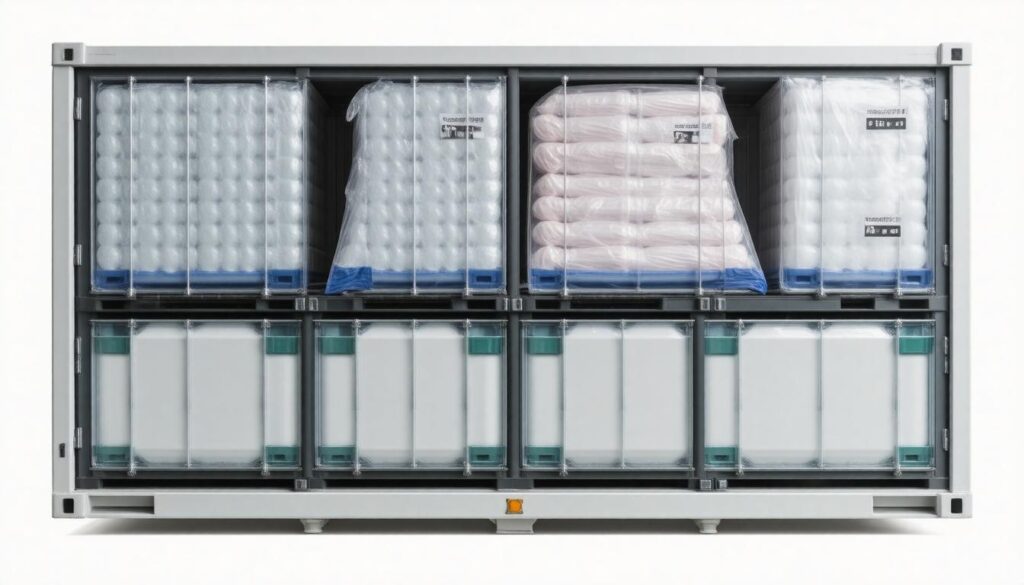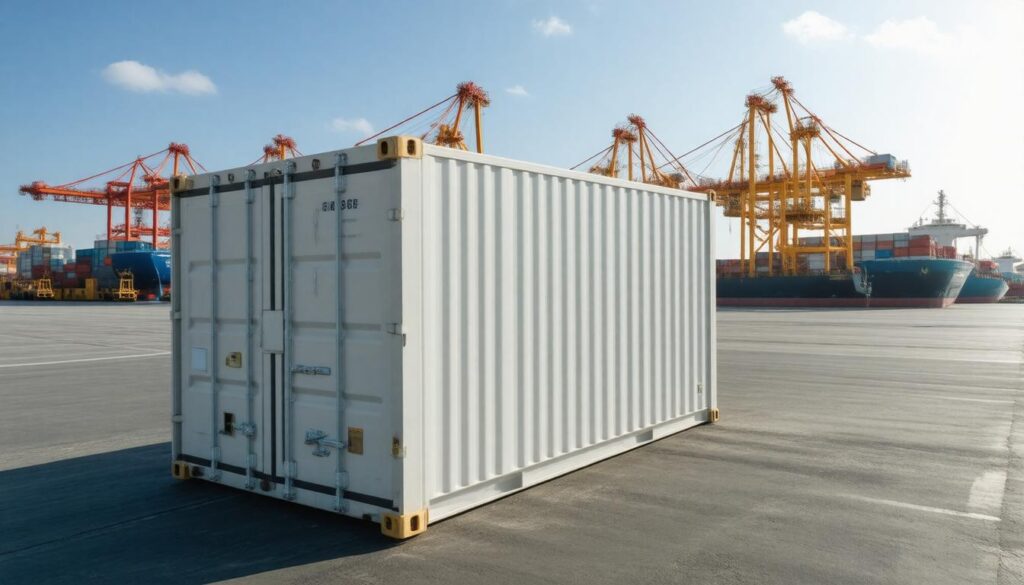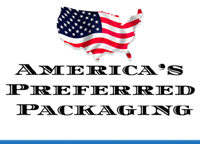When it comes to shipping sensitive items like pharmaceuticals or perishable foods, keeping things cold is crucial. Many companies have relied on dry ice for temperature control, but there are growing concerns about safety and environmental impact. Dry ice can be hazardous if mishandled, and its rising costs during peak demand often catch businesses off guard. So, what’s the solution? The good news is there are safer and more sustainable alternatives out there that don’t compromise on effectiveness. In this article, we’ll explore different options available today and help you navigate the shifting landscape of cold chain shipping methods. Let’s dive into the world of innovative packaging solutions that prioritize both safety and efficiency!
Effective alternatives to dry ice for cold chain shipping include gel packs, such as Pelton Shepherd’s Cryo Ice™ gel packs, which maintain temperatures below 25°F and ensure safe handling without the need for specialized training. These alternatives provide consistent cooling while minimizing safety risks associated with dry ice, making them a suitable choice for shipping perishables and pharmaceuticals.

Why Look for Alternatives to Dry Ice?
To start, safety concerns surrounding dry ice cannot be overstated. As a material that transitions from solid to gas, it produces carbon dioxide, which can create hazardous conditions if not adequately ventilated. There have been troubling incidents where individuals who were transporting or using dry ice suffered from asphyxiation. These are stark reminders of why necessary precautions must always be taken when dealing with this frozen substance. Companies find themselves burdened not just by the responsibility of safe handling but also compliance with complex regulations imposed by various health authorities to minimize these risks.
The financial implications of using dry ice extend beyond safety concerns.
Dry ice often comes with unpredictable supply and cost challenges. Take, for example, the unprecedented demand during the COVID-19 vaccine rollout; businesses experienced skyrocketing prices, sometimes reaching a staggering 300% increase. This price surge highlighted how dependent many sectors are on dry ice, exposing them to market fluctuations that can severely disrupt operations. For those in the cold chain shipping industry, maintaining a steady supply of dry ice becomes increasingly challenging, jeopardizing service reliability and budgeting efforts.
Beyond economics and safety, the environmental impact of dry ice is growing more critical.
The production and sublimation of dry ice contribute to greenhouse gas emissions, raising eyebrows as climate change becomes an acute global concern. With businesses facing increasing pressure to adopt environmentally friendly practices, relying on a product that is essentially a byproduct of CO2 doesn’t align well with sustainability goals. Companies today are expected not only to maintain efficient logistics systems but also to demonstrate their commitment toward reducing their carbon footprint.
The need for alternatives has grown more urgent than ever; innovative solutions like gel packs or phase change materials can provide similar temperature control without the same limitations. By switching from dry ice to safer, more sustainable options, companies can navigate both operational efficiency and corporate responsibility while maintaining the integrity of perishable products during shipping.
Promising Non-toxic Cooling Solutions
One alternative gaining traction is gel packs, specifically innovative solutions like Pelton Shepherd’s Cryo Ice™. These gel packs are crafted to be non-toxic, providing a viable option that sidesteps the hazards of dry ice. They excel at maintaining temperatures below 25°F even during thawing, which is crucial for sensitive materials such as vaccines and pharmaceuticals. The benefit extends beyond just temperature maintenance; Sarah Nguyen, a logistics manager at a major pharmaceutical company, remarked that “using Cryo Ice™ gel packs has reduced our safety compliance costs significantly but also enhanced our workers’ safety.” This dual advantage highlights how smart choices in packaging can directly impact both financial and human factors within the supply chain.
Beyond gel packs, another fascinating technology is emerging in the form of Phase Change Materials (PCMs).
These materials operate by absorbing and releasing thermal energy as they undergo phase changes from solid to liquid and back again. This means they can maintain specific temperature ranges for prolonged periods, making them ideal for various cold chain applications. For example, products like Enviro Ice™ leverage PCMs to sustain necessary temperatures for up to 48 hours. This long-lasting effect is particularly beneficial when delays can occur during transport, ensuring that valuable biomedical goods remain stable along their journey. As PCMs do not require venting or special handling protocols like dry ice, they offer additional convenience for companies.
However, innovations do not stop here—additional non-toxic options are on the horizon, expanding the toolkit available for safe, effective cold chain shipping solutions.
New technologies are continuously emerging, striving to improve efficiency without relying on hazardous materials. Many companies are now exploring combinations of gel packs and PCMs to optimize temperature control further and extend the durability of shipments. The use of intelligent monitoring devices paired with these innovative cooling solutions helps ensure that temperatures stay within specified ranges throughout shipping cycles, providing real-time data analysis on product integrity.
Chemical Refrigerants in Cold Chain Shipping
Chemical refrigerants have emerged as a noteworthy alternative to traditional dry ice in the realm of cold chain shipping. They maintain the necessary low temperatures essential for sensitive cargo, such as pharmaceuticals and perishables.
Notably, refrigerants like hydrofluorocarbons (HFCs) and their newer counterparts, hydrofluoroolefins (HFOs), are widely utilized in modern refrigeration units and portable cooling containers designed for effective thermal management.
Advantages of Chemical Refrigerants
The principal advantage of these chemical refrigerants is their ability to maintain consistent low temperatures over extended periods, crucial for preserving product integrity during transport. For instance, companies such as Cryoport integrate these advanced refrigerants into their high-tech shipping containers, ensuring stable cooling environments tailored for delicate pharmaceuticals demanding precise temperature control. The benefits extend beyond firmness in temperature; they also enhance operational efficiency, allowing for smoother logistics management.
However, despite their advantages, there are important considerations to keep in mind.
Challenges
One significant drawback associated with chemical refrigerants involves their environmental impact. Many HFCs contribute heavily to global warming and ozone depletion concerns. As the industry evolves, regulations surrounding these substances become stricter, compelling companies to navigate complex compliance landscapes.
Moreover, the initial setup costs for integrating a refrigerant-based system can be high due to infrastructure investments; however, these systems tend to offer long-term cost savings through energy efficiency and reduced spoilage rates.
Balancing efficiency and environmental responsibility is key when considering these refrigerants as part of your shipping strategy. Building on this foundation of understanding allows us to explore innovative technologies that enhance temperature control throughout the supply chain.
Efficient Temperature Management Systems
Efficient temperature management systems are critical for ensuring that sensitive products remain in their optimal condition throughout transportation. To maintain the integrity of pharmaceuticals, perishables, and other temperature-sensitive goods, it is essential to implement a combination of monitoring technologies and proactive temperature solutions.
Active Cooling Systems
Active cooling systems remain one of the most precise methods for maintaining temperature control during transit. These systems utilize electricity to operate onboard refrigeration units, allowing for accurate temperature settings tailored to specific products. While they provide an exceptional level of control, they also incur increased costs associated with both equipment installation and ongoing energy consumption.
For example, advanced refrigerated units from manufacturers like Thermo King deliver customized cooling but require a dependable power source throughout the shipment journey.
The cost-effectiveness of these systems often hinges on the value of the goods being transported; for high-value pharmaceuticals, the expense can be justified by the necessity of preserving product efficacy.
Passive Cooling Systems
Unlike their active counterparts, passive cooling systems rely on insulated packaging and phase change materials (PCM) to maintain temperature without additional energy input. This design makes them considerably more cost-efficient because they eliminate the need for direct electrical power. Typically used for shorter shipping durations or less valuable items, passive systems can effectively maintain temperatures under ideal conditions but may face constraints in longevity.
Advantages include lower operational costs, ease of deployment across various shipping scenarios, and reduced complexity since they do not demand electrical infrastructure. Packed in insulated containers filled with PCM packs, these systems can keep goods cold by leveraging thermal inertia. Just imagine a perfectly chilled shipment arriving on time without needing to tap into a power grid—that’s exactly what passive systems can achieve.
However, it is crucial to note their limitations:
- Duration: They may not sustain lower temperatures as long as active systems.
- Temperature Range: There could be a narrower range of temperatures that can be maintained.
- Sensitivity: Variability in external temperatures can impact their effectiveness more than active solutions would.
Each system offers distinct advantages and drawbacks; understanding these nuances is essential for optimizing overall efficiency in cold chain logistics. As we explore the financial implications involved in selecting these innovative alternatives, we will uncover how cost factors play a pivotal role in decision-making processes regarding transportation methods.
Sustainable and Eco-Friendly Options
Sustainability is becoming a fundamental criterion for modern businesses, especially in cold chain logistics where environmental impacts have traditionally been overlooked. One of the most notable innovations in this area is biodegradable gel packs. Many companies are shifting towards using these gel packs as they significantly reduce the ecological footprint compared to traditional gel packs.
For instance, products like Enviro Ice™ decompose naturally and leave no harmful residues behind. This not only aligns with global efforts to combat climate change but also meets the increasing consumer demand for responsible sourcing.
Solar-Powered Cooling Units
As we move deeper into a world that values sustainability, alternative cooling systems such as solar-powered cooling units are rapidly gaining traction. These innovative solutions, which can operate without reliance on fossil fuels, drastically reduce operational costs and offer numerous environmental benefits. Companies like EcoCool have developed solar solutions specifically aimed at regions where electricity access may be sporadic or unreliable.
These units harness sunlight to maintain required temperatures, offering a compelling case for companies looking to establish greener practices while still upholding quality service standards.
The allure of going green extends beyond merely adhering to regulatory guidelines; it speaks to a business’s core values and its commitment to future generations.
Benefits of Eco-Friendly Solutions
Transitioning toward sustainable options often leads to unforeseen benefits that can enhance overall operational efficiency. For instance, employing biodegradable materials may frequently result in lower disposal costs, and the use of renewable energy sources mitigates energy price volatility—essentially providing a buffer against inflation or supply disruptions.
As businesses strive to go green, these eco-friendly alternatives not only offer environmental benefits but also provide potential cost savings and bolster brand equity in an increasingly conscientious market.
With sustainability playing a critical role in shaping supply chain strategies, it opens up exciting avenues for innovation and efficiency, paving the way for what’s next on the horizon in shipping advancements.
Future Trends in Cold Chain Shipping

Keeping an eye on future trends can help businesses stay ahead of the curve. One prominent trend is the increasing application of blockchain technology within the industry. Blockchain enhances traceability and transparency, allowing stakeholders to monitor temperature variations and other vital data throughout the shipping process.
Imagine being able to see every step your product takes, ensuring it has remained at the required temperatures from start to finish. It’s quite a shift from stuffing documentation into a folder and hoping for the best!
Blockchain for Traceability
Beyond mere buzzwords, adopting blockchain helps companies hold themselves accountable. By utilizing a decentralized ledger, participants in the supply chain can track every interaction with the product, effectively eliminating disputes regarding spoilage claims or quality concerns.
In short, no one can hide behind vague records anymore; everything is transparent and immutable. From farmers growing crops to retailers selling them, blockchain can dramatically improve communication and trust amongst all parties involved.
But blockchain isn’t just about recording data; it’s about creating a smarter way to manage logistics.
AI and Machine Learning
Artificial intelligence (AI) and machine learning are becoming game-changers in cold chain logistics as well. These technologies allow companies to analyze vast amounts of data to predict demand patterns, optimize delivery routes, and better manage energy consumption for refrigeration units.
Consider AI algorithms predicting when certain products will be in high demand due to seasonality; they can suggest adjusting inventory levels and shipment schedules accordingly. Furthermore, these smart systems ensure that your temperature-controlled containers maintain optimal conditions throughout transit, keeping perishables fresh and minimizing waste.
Adopting these cutting-edge technologies not only improves efficiency but also reduces costs significantly.
As businesses become increasingly reliant on these advanced solutions, competition will remain high, driving continual improvements across cold chain logistics practices.
Moreover, eco-friendly alternatives will also shape future investments in cold chain shipping methods. Companies recognize that consumers are increasingly opting for sustainability as a purchasing factor.
This focus will drive innovation in areas like sustainable refrigerants—offering viable replacements to harmful chemicals currently used—and upgrading old storage facilities that struggle with energy efficiency.
In corporate boardrooms worldwide, discussions about how to address climate change are no longer optional; they’re imperative. By investing in modern technologies such as blockchain and AI today, companies won’t just keep pace—they’ll lead the charge toward a more efficient, sustainable future in cold chain logistics.
By recognizing these trends and adapting accordingly, businesses can position themselves strategically within the evolving landscape of cold chain shipping. The commitment to sustainability and innovation will prove essential for ensuring long-term success.
Contact Us for a Free Quote

